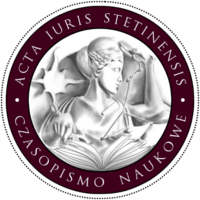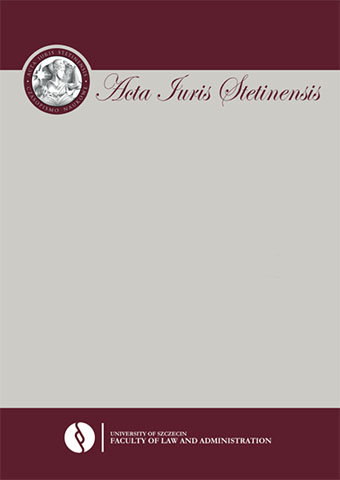






| Authors: |
Róża
Kędra-Chmielewska

Zachodniopomorski Oddział Polskiego Towarzystwa Suicydologicznego Oskar Kubacki 
Zachodniopomorski Oddział Polskiego Towarzystwa Suicydologicznego |
| Keywords: | child Criminal Code incitement to attempt on one’s own life suicide murder |
| Data publikacji całości: | 2021 |
| Page range: | 15 (37-51) |
| Downloads ?: | 447 |
| 1. | Bachmat P., Mozgawa M., Crime of persuasion to commit or assistance in the commission of suicide Under Article 151 CC, „Ius Novum” 2017, nr 2. |
| 2. | Budyn-Kulik M., Komentarz do art. 151 k.k., w: M. Mozgawa (red.), Kodeks karny. Komentarz aktualizowany, LEX/el. |
| 3. | Burdziak K., Kierowanie wykonaniem samobójstwa i polecenie jego wykonania w polskim prawie karnym, „Ruch Prawniczy, Ekonomiczny i Socjologiczny” 2014, z. 4. |
| 4. | Burdziak K., Przedmiot czynności wykonawczej przestępstwa z art. 151 Kodeksu Karnego, „Acta Iuris Stetinensis” 2015, nr 2. |
| 5. | Burdziak K., Propozycja nowelizacji art. 151 Kodeksu Karnego, „Prawo w Działaniu” 2019, nr 39. |
| 6. | Burdziak K., Samobójstwo w prawie polskim, Warszawa 2019. |
| 7. | Giezek J., Komentarz do art. 151 k.k., w: J. Giezek (red.), Kodeks karny. Część szczególna. Komentarz, LEX/el. |
| 8. | Kokot R., Komentarz do art. 151 k.k., w: R.A. Stefański (red.), Kodeks karny. Komentarz, Warszawa 2015. |
| 9. | Konarska-Wrzosek V., Komentarz do art. 151 k.k., w: V. Konarska-Wrzosek (red.), Kodeks karny. Komentarz, wyd. III, LEX/el. |
| 10. | Kosonoga-Zygmunt J., Namowa i udzielenie pomocy do samobójstwa (art. 151 k.k.), „Prokuratura i Prawo” 2015, nr 11. |
| 11. | Kosonoga-Zygmunt J., Swoboda decyzji woli suicydenta jako przesłanka odpowiedzialności karnej za przestępstwo z art. 151 k.k., „Kwartalnik Prawa Publicznego” 2015, nr 2. |
| 12. | Królikowski M., Zawłocki R., Prawo karne, Warszawa 2018. |
| 13. | Kuberska-Przekwas K., Samobójstwa dzieci i młodzieży jako choroba społeczna, „Warmińsko-Mazurski Kwartalnik Naukowy, Nauki Społeczne” 2014, nr 1. |
| 14. | Malczewski J., Problemy z prawną kwalifikacją lekarskiej pomocy do samobójstwa (art. 151 k.k.), „Prokuratura i Prawo” 2008, nr 11. |
| 15. | Malczewski J., Eutanazja. Gdy etyka zderza się z prawem, Warszawa 2012. |
| 16. | Mozgawa M., Komentarz do art. 208 k.k., w: M. Mozgawa (red.), Kodeks karny. Komentarz aktualizowany, LEX/el. |
| 17. | Tyszkiewicz L., Komentarz do art.151 k.k., teza 8, w: M. Filar (red.), Kodeks karny. Komentarz, wyd. 5, LEX/el. |
| 18. | Zoll A., Komentarz do art. 151 k.k., w: W. Wróbel, A. Zoll (red.), Kodeks karny. Część szczególna. Tom II. Część I. Komentarz do art. 117–211a, LEX/el. |